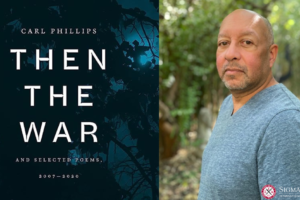 by Colin Joseph Loeffler
by Colin Joseph Loeffler
Midwestern Associate Student Representative, 2013-2014
North Central College, Naperville, IL
Books have taken over my desk. That’s nothing terribly out of the ordinary, except that, for once, they’re organized in nice, neat stacks. Let’s take a quick journey across these stacks:
1st Pile: Books I’m reading for fun
Girl With Curious Hair by David Foster Wallace
The Hours by Michael Cunningham
We the Animals by Justin Torres (Sigma Tau Delta’s Common Reader–check it out!)
2nd Pile: A few of the books for my honors thesis
The History of Sexuality Vol. 1 by Michel Foucault
Publics and Counterpublics by Michael Warner
3rd “ Pile”: The play I’m directing this fall (I study theatre too)
Speech & Debate by Stephen Karem
4th Pile: Scottish Literature
Several collections of Scottish literature
Several books about Scottish literature
Bardic Nationalism by Katie Trumpener
A certain Scottish novella
Today I concern myself with this last pile. My job this summer is to help one of my professors at North Central College, Dr. Martha Bohrer, create a critical edition of a particular Scottish novella from the romantic period. I am very lucky to have a summer job that relates directly to my English major (although I’m also still giving tours for our admissions office).
When we English students read texts in class, we typically work from critical editions, especially with older, historical works. There are some specific requirements for creating the “authoritative text” for these editions, and there’s a whole area of theory that addresses these concerns (because literary theory was hungry for yet another subgenre). Dr. Bohrer is responsible for creating the best possible text and for writing the critical essay that introduces the reader to the novella. In critical editions, the text of the work is usually annotated. It is my responsibility to provide these textual annotations, first by pinpointing the areas that need clarification and then by searching for the relevant information.
Up until this project, I took critical editions such as the one we’re creating for granted. All the information I’ve ever needed for a basic analysis of the text comes packaged in the volume that contains the work. These volumes are so typical in the college English classroom that not once did I think about all the labor that goes into preparing them for students such as myself to use. After beginning our project, my respect for the process of creating these editions has increased dramatically. I have spent days looking through various eighteenth century historical documents to find information for just one small note.

For example, the novella begins when the assembly of the Church of Scotland places a new minister in one of its churches. The townspeople who attend the church become angry. I had to ask what it was about the placement that angered the people of the parish. After examining several different religious encyclopedias and texts from the time the novella takes place, I found that, in the eighteenth century, the Scottish church had laws in place that allowed for either an episcopal arrangement, in which a larger governing body appoints ministers, or a presbyterian arrangement, in which the heritors of a local church appoint the minister. This conflict opens the book, and it was up to me to aid potential readers through this opening. My role is to help them through the entire novella.
Perhaps my job this summer is not the most exciting, and it certainly does not involve any exotic travel (unless you count a short train ride to a research library in nearby Chicago), but I can think of no project I would rather work on. I love the novella, and I want to make sure any student has the ability to read and enjoy it like I do.




